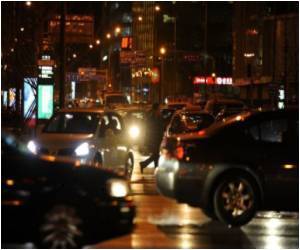
He's not trying to defend his action. Rakha, director of the Center for Sustainable Mobility at the Virginia Tech Transportation Institute, is describing his research. Since 2005, his research group has been studying drivers' behaviors as they approach yellow lights. Their goal is to determine signal times for intersections that are safer and still efficient.
If a driver decides to stop when instead of proceeding, rear-end crashes could occur. If a driver proceeds instead of stopping, collisions with side street traffic could occur. Although observation-based research shows that only 1.4 percent of drivers cross the stop line after the light turns red, more than 20 percent of traffic fatalities in the United States occur at intersections.
"If the yellow time is not set correctly, a dilemma zone is imminent," Rakha said.
"The dilemma zone occurs when the driver has no feasible choice," he said. "In other words the driver can neither stop nor proceed through the intersection before the light turns red. This can also occur if the approaching vehicle is traveling faster than the posted speed limit and/or if the driver's perception and reaction time is longer than the design one-second value."
In most cases, the yellow time is set for 4.2 seconds on a 45 mph road. The time is longer for higher-speed roads. "These timings are based on two assumptions," Rakha explains. "Namely, the driver requires one second to perceive and react to the change in signal indication and that the driver requires 3.2 seconds to stop from 45 mph at a comfortable deceleration level, assumed to be 3 meters per second squared (3 m/s2 ) or 10 feet per second squared."
Advertisement
Source-Eurekalert









